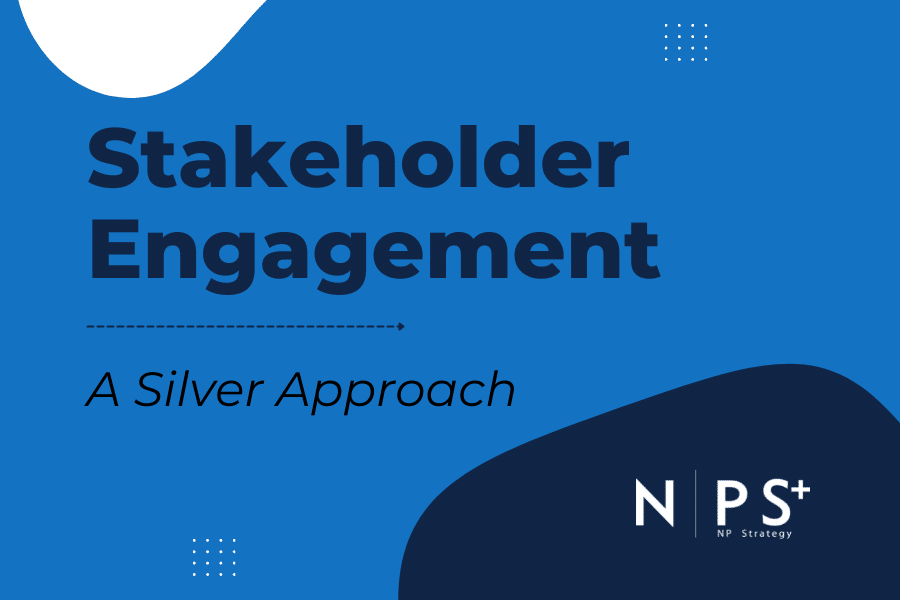
Stakeholder management has been touted as a “silver bullet” to achieve successful projects or implement changes in organizations. In reality, it is better described as “silver buckshot”. It takes a lot of interaction with various stakeholders to understand the needs and desires of people who have an interest in your organization or project.
Outlined below is a SILVER Approach to stakeholder engagement:
Set your engagement goals and strategy.
First, clearly define why you want to engage with stakeholders. Whatever your reason(s), stakeholder engagement should be a core component of your business process and should support your overall strategy.
Reasons for developing a stakeholder engagement plan include:
- Market development – Leverage stakeholder knowledge to reach new customers or identify new markets as opportunities.
- Risk Management – Groups and individuals may help you identify potential risks before they become threats to your project or organization.
- Innovation – Savvy businesses today encourage customers and stakeholders to share new ideas to develop new products and services.
- Sustainability – Stakeholders can become advocates for companies implementing green practices.
- Regulatory and/or permit approvals – Effective stakeholder and external relations engagement can help support key regulatory consents and approvals for projects.
Identify your stakeholders.
Next, make a list of everyone who will be involved at all the touchpoints of your project. List relevant groups, organizations and people. This may be a long list, and may include customers, community and political leaders, suppliers, employees and others. Then, identify who is important and who to spend the greatest effort to manage.
Label and categorize all your stakeholders using a mapping chart.
Prioritize your list of stakeholders by interest and influence based on your understanding of the degree of their ability to impact your desired outcomes. Keep in mind that stakeholder influence changes throughout the life of your project. Go back to your prioritized list regularly and review with whom you should spend time.
Validate relationships with stakeholders, and create a timeline for communication and reporting.
Relationships are the building blocks you rely on during stakeholder engagement. These relationships need to be cultivated appropriately with recognition of each party’s interests. Then, based on the relationships and data you’ve gathered, develop a communication and reporting plan that documents the information requirements and frequency of communication. Monitor and govern your reporting plan regularly for successful outcomes.
Engage with your stakeholders by providing efficient and effective ways they can participate.
Engaging a wide group of stakeholders helps to reduce risk and increase opportunities for success. There are many different ways for individuals and groups to engage on your behalf, including Letters to the Editor, targeted phone calls, media interviews, and strategic messages shared with customers. Don’t forget to engage your employees to allow them to be agents of change, internally and externally.
Report on the analysis of your engagement activities in context of your objectives and strategy.
Based on your findings, formulate actions and adjust your tactics and strategies to achieve your objectives.
Stakeholder engagement is not a one-time silver bullet activity. It is an ongoing silver buckshot process that can help your project or organization achieve success.
A South Carolina native, Marcia Purday, APR lives the state’s motto “Dum Spiro, Spero,” which means “While I Breathe, I Hope.” She brings an optimistic approach to the most complex communication opportunities. She serves as a Senior Communications Advisor for NP Strategy, following extensive leadership experience including her time as the Director of corporate external affairs for BellSouth, followed by serving as VP of communications and public relations for the SC Chamber of Commerce. An accredited public relations practitioner (APR), Marcia has an MBA from the Darla Moore School of Business and a BA in Journalism from the University of South Carolina. She also currently teaches Integrated Communication Campaigns and Creativity: Strategy to Execution at the USC School of Journalism.
See also: Stakeholder Management
